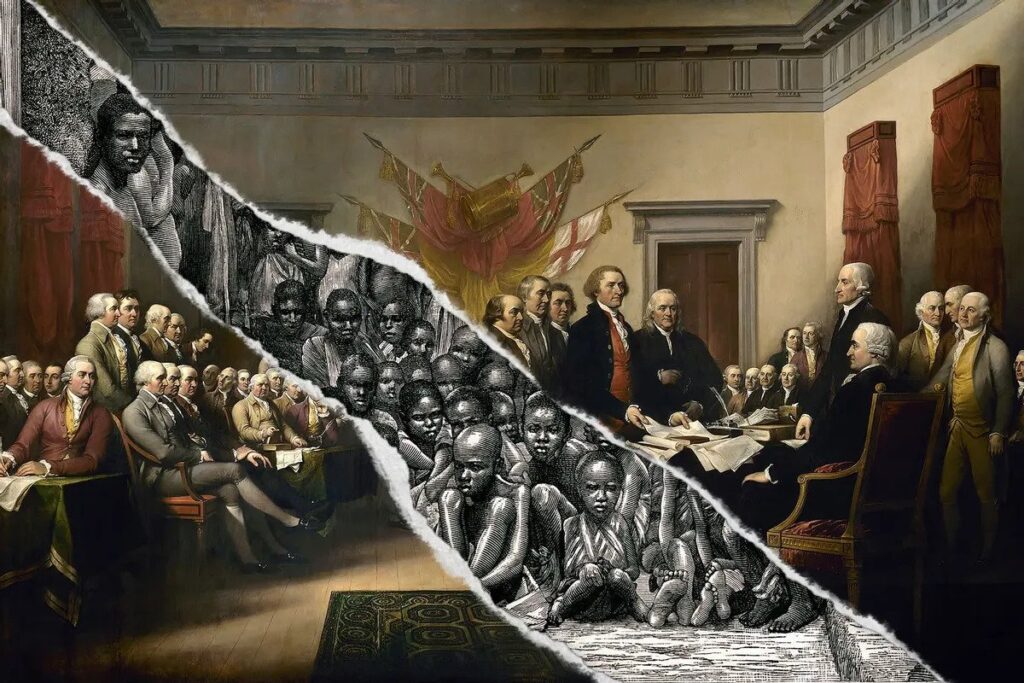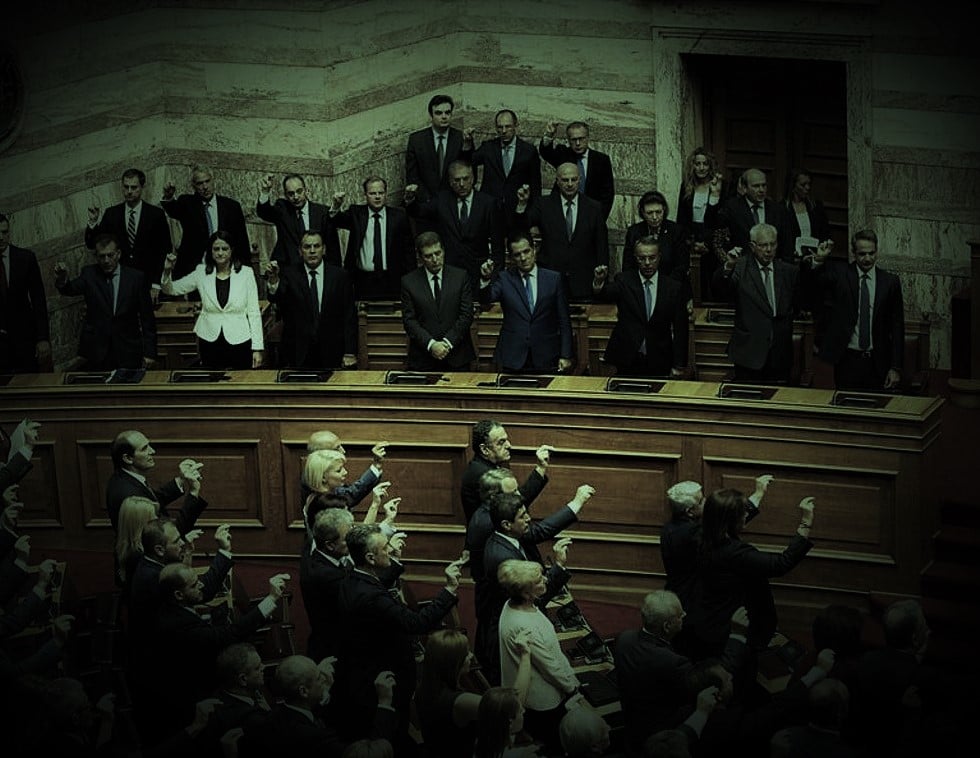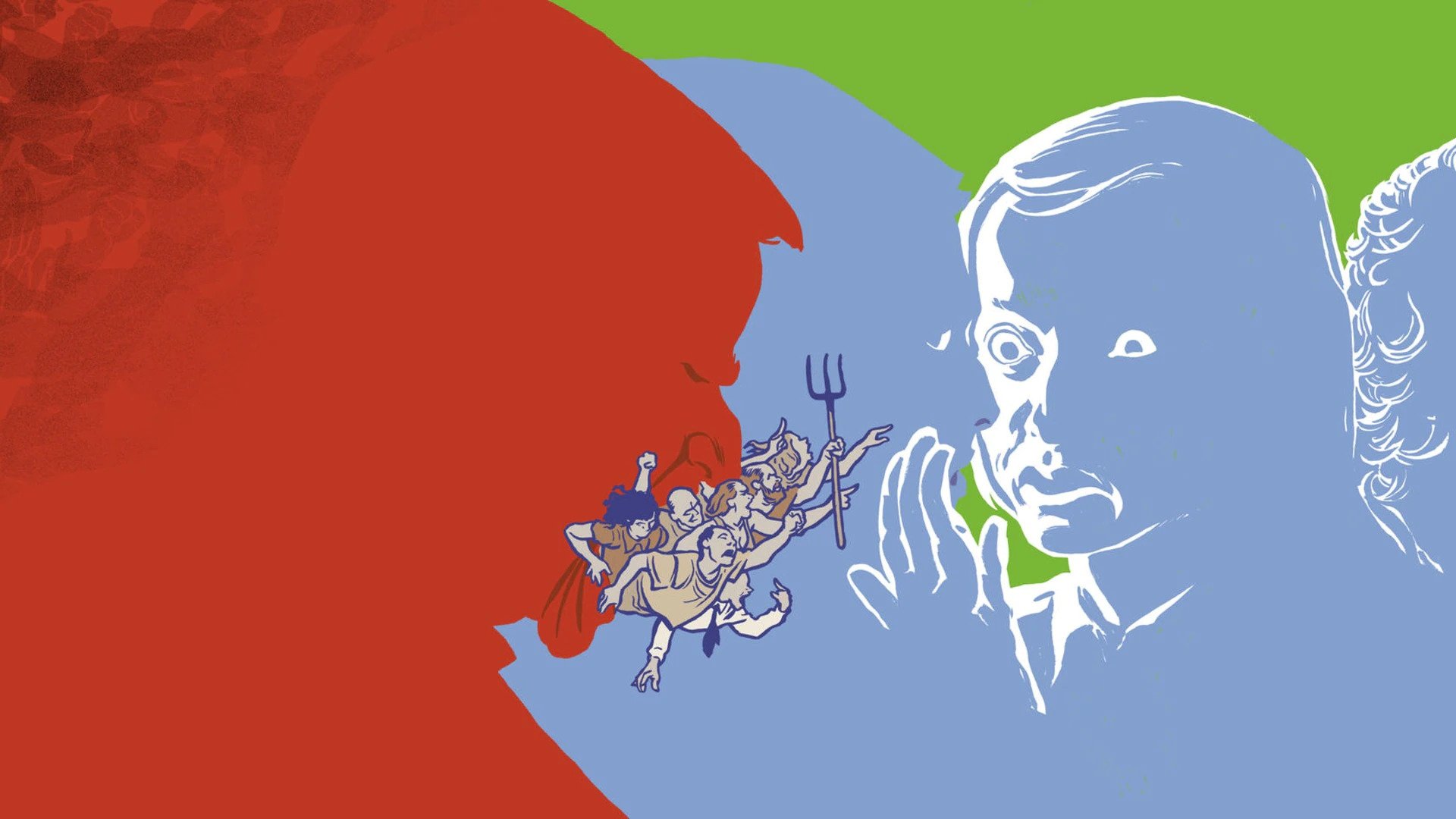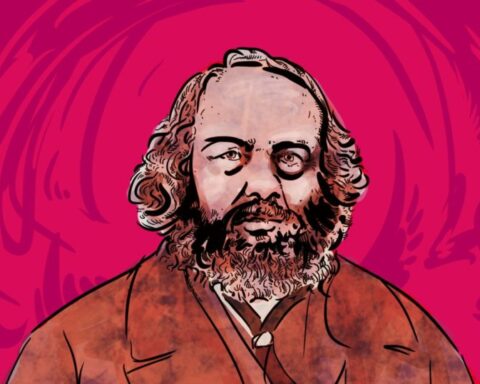Why is there such dissatisfaction with democracy? Why does there appear to be so little difference between political parties? And why do politicians claim to represent ‘everyone’?
In Technopopulism: The New Logic of Democratic Politics, political theorists Carlo Invernizzi Accetti and Christopher Bickerton contest many of the assumptions about the origins of the crisis of democracy, and argue that we need to move beyond the “simplistic idea that in the right ‘dose’ populism and technocracy can counterbalance one another.”
In this interview, we discuss the absence of ideological platforms in contemporary politics, why we need more mediation not less, and how the paradox of inclusion – claiming to represent ‘everyone’ – is actually anti-pluralist.
INTERVIEW with Carlo Invernizzi Accetti by Jonny Gordon-Farleigh for Stir to Action Magazine

Your book – Technopopulism: The New Logic of Democratic Politics – starts with an analysis of the crisis of democracy, party systems transforming beyond recognition, the decline in intermediary bodies, and the marginalisation of political partisanship. Can you retrace this history and the consequences for our current political situation?
The word crisis derives from ancient Greek, where it was a medical term, signifying the transition from one state to another, usually either a state that led to health or death. So it’s an acute transition. If you want to understand what the crisis of democracy is today, we have to see where we started from and where we are today, and try to think about what caused this transition. If we think about democratic politics in the middle of the twentieth century, it was fundamentally structured by the ideological division between left and right. Parties competed around ideological platforms which corresponded to the articulations of the interests and values of particular groups within societies. So, for instance, the Labour Party represented an articulation of the interests and values of a particular group within society – the working class – whereas other parties represented the interests of a landed aristocracy, a gentry, or a peasantry. But there were other divisions as well, such as religion. In Italy, for example, there was the Christian Democratic Party, which represented the interests and values of Christians in opposition to secular groups. So left and right was the articulation of these different interests and values within societies, and encouraged parties to mobilise different interest groups. During this period the differences in election results were relatively small and, interestingly, parties won when they managed to mobilise their own groups.
Fast forward to today, and what we have is a very different politics. Almost every political party is intent on saying it is neither left nor right. Instead, they are trying to obtain the consensus of as wide a part of the population as possible. Not a particular section within society – such as the working class – but the electorate at large. So political parties now appeal to as broad categories as possible within the electorate, particularly promoting their ‘competence’ and ‘popularity’. This has gradually marginalised ideological platforms in our party system, those directly rooted in social interests and values.
So, how did we get from there to here? The argument that Chris Bickerton and I develop in our book is that there are deep social and political reasons for this transformation. Initially this transformation responded to changes in the social groups that previously structured political divisions. Though such social classes have not disappeared, they are fundamentally different from the post-war era. At that time, the division between who is or is not working class was immediately clear. Today, culture is much more homogenous and class is far more complex. Similarly, religious divisions are no longer quite the same after secularisation.
In terms of the crisis of democracy, these changes in social classes were not reflected in the parties that organised political participation. This is the ‘freezing hypothesis’ that political scientists, such as Seymour Martin Lipset, George Lipsitz, and Stein Rokkan, were advancing in the 1960s. They argued that parties remained frozen on historical social divisions, such as proletariat and bourgeoisie, or Christian and non- Christian, even when society had ceased to reflect those divisions. This led to a gradual separation between society and politics, as politics became progressively detached from representing the interests and values of social groups, and in turn, society became progressively unrepresentative and closed in upon itself.
So the growing separation of society from politics is, at the root, a crisis of intermediary bodies: the political parties, the trade unions, the churches, and the organisations of civil society. Despite the changes in the latter part of the twentieth century, these intermediary bodies were largely incapable of transforming themselves and this led, on one hand, to a self-referential political class competing with each other for electoral success, and a society, on the other hand, that was increasingly folded in upon itself and felt alienated from politics. This created the crisis of democracy that we have today.

Political theory has largely insisted on maintaining the opposition between technocracy – the process of experts finding solutions to collective problems through non-political means, and populism – the claim to exclusively represent the interests of the whole electorate. But your work proposes that these ‘modes of political action’ – technocracy and populism – have combined to form a new logic for democratic politics. Can you explain the concept of technopopulism?
The concept of the crisis of democracy is negative – it tells us there is a void in the place of what existed before. Many have analysed and lamented this crisis of democracy, but few have actually tried to give a name to what replaces it. Technopopulism is the name we have given to this new logic of democratic politics. So let’s unpack this concept of technopopulism. The basic idea is that today’s politicians do not compete in terms of ideological platforms. Instead, they primarily compete over claims to be competent, or what we call technocracy. This is where politicians or parties claim to have access to a specific knowledge that makes them effective. Or they compete on the claim of representing the people, or what we call populism. This is where politicians or parties claim to have access to a specific knowledge about what ‘the people’ want.
So, how does this relate to the left-right opposition? While the left-right competition continues, it is increasingly overlaid by this new technopopulist logic, which we argue is becoming more dominant. So what replaces the ideological form of politics is a logic whereby politicians compete on the basis of claims to being technocratic or competent, or claims to being popular or populist. To unpack these categories further, I think it’s useful to start from where you suggested – in political theory where ‘technocracy’ and ‘populism’ are seen as opposites.
In political theory, technocracy often evokes images of economists, elites, and experts in closed rooms making decisions for other people – a top-down version of politics. In contrast, populism evokes images of the unwashed masses storming the electoral procedures and expelling the existing political class – a type of bottom-up politics. And in that way they are seen as opposites. The starting point of our thesis is the idea that actually beyond this level of opposition, there is also a fundamental complementarity or even commonality between technocracy and populism, which lies in the fact that they’re both forms of ‘politics of truth’. Both technocrats and populists claim to have access to some kind of fundamental truth, which entitles and legitimises them to rule others.
Technocrats claim to have knowledge or expertise that legitimises them to tell others what to do, and populists also claim to have access to a specific kind of knowledge, which informs their political decisions. This functions, within this mode of politics, as the basis of legitimacy. So as forms of ‘politics of truth’, technocratic and populist platforms can dismiss opposition as illegitimate – if you have the ‘truth’, whoever disagrees with your position is simply wrong. A technocrat, for instance, has no time for political opposition and sees no value in deliberation. And in the same way, the populist doesn’t recognise the legitimacy of opposition, because if you already know what the people really want, whatever the other wants is illegitimate. It can only feasibly be an elite or a foreigner who does not have a legitimate stake in the politics. So both of these approaches have an important complementarity: they are both ‘politics of truth’ and, by virtue, anti-pluralist.
For this reason, they also have the same enemies. In Italy, a good example is Mario Monti, the former European commissioner who became Prime Minister during the economic crisis, and his arch nemesis, Beppe Grillo. Monti is the technocratic, Grillo the populist. Despite this opposition, both politicians share the same enemies – the intermediary bodies that organise political participation. They hate parties, professional politicians, the media, and trade unions. All of these forms of mediation are the enemies of populism and technocracy. And this is not a coincidence – they both rely on a similar conception of politics as a form of ‘truth’. Put another way, technopopulism positions the interests of the ‘whole’ – a disorganised mass – against the ‘part’. How is this different from the previous political logic? If, formerly, left and right politics were on a horizontal plane which featured the legitimate competition between equal ‘parts’ (i.e. parties representing different economic and social interests), conversely, populism and technocracy are both vertical forms of politics which position themselves as the ‘whole’ against the ‘parts’.
What we argue in the book is that because of this commonality – the fact that populism and technology are both forms of ‘politics of truth’ – they present a new logic for democratic politics in a context where political groups have largely disappeared and politicians claim to represent the interests of ‘everyone’. Precisely because they don’t appeal to the interests of any particular social groups (i.e. ‘parts’), politicians can now secure the favour of large sections of a disorganised population. More importantly, despite the apparent opposition between technocracy and populism, politicians have also quickly learned that they can appeal to both registers. It’s not necessary to be unpopular if you are competent, or incompetent if you are popular. In fact, it’s completely possible to be both competent and popular, and as politicians are trying to appeal to the interests of everyone within society, it’s in their interest to be both.
So within our case for technopopulism, we suggest that politicians, unmoored from the representation of particular interests and values, are increasingly appealing to both registers. For the last few decades, for instance, if you are interested in winning an election, you do not claim to represent the interests and values of different ‘parts’ of society – you make the case that you can be an effective and popular politician or party for ‘everyone’.

In the book you talk about the “structural dependence dilemma”, the idea that politics is subordinate to the needs of markets. Technopopulism seems to emerge as a new logic at this point in the post-political era.
The former British prime minister Margaret Thatcher articulated the idea that ‘there is no alternative’. This was to argue that there is only one realistic model of political economy. As there are no real ideological disagreements over the future, the political system ceases to be a place to deliberate and contest economic interests or social values. Or put another way, if goals are already predetermined within an unchangeable economic framework, what’s the point of debate?
So the logic of technopopulism emerges precisely when there is no alternative, when parties cease to represent different visions of organising society. At this point, politicians have no other platform to compete on except how competent they are at fulfilling the needs of the system. Democratic politics then becomes about ‘caretaking’ the current system, rather than contesting the ‘ends’ of the system itself. Before the rise of technopopulism, for instance, if you were a socialist, you had a very different idea of what society should look like than if you were a liberal or a Christian Democrat. In this context – within a broad ideological horizon – technocracy makes no sense. If there is no consensus about the ‘ends’ of the political process, the question of competence is not an issue. First we have to agree about our political goals and then we can decide who is the most effective. In fact, technocracy existed in the 1950s and 1960s within parties – it was possible to discuss which individuals were considered more or less effective within parties because they already shared a consensus. But today, because there is almost no ideological divergence, technocracy and populism become the main forms of competition between parties.

In terms of the European political landscape, you claim that technopopulism can be seen in many different ‘cases’, such as the UK’s New Labour – ‘through the party’; the Italian Five Star Movement – ‘through the electoral base’; and French president Emmanuel Macron – ‘through the leader’. Can you elaborate on these ‘varieties’ of technopopulism?
New Labour is an interesting case of technopopulism as it locates itself at the start of this transition, right aft er the end of the Cold War, when the ideologies of this period were exhausted or overcome. Within this context, Blair and New Labour appealed to the conception of a ‘third way’ – a politics beyond left and right – which essentially pointed towards a post-ideological stage in democratic politics. During this time, we see – according to our argument – the emergence of technopopulism ‘through the party’.
One of the most important slogans that Blair popularises is ‘what matters is what works’. It’s basically saying, ‘I’m not interested in ideological preconceptions, I’m focused on problem solving.’ It’s a pragmatic move that tries to dispel the old idea that the Labour Party is incompetent at dealing with the economy – and implies they will draw on almost anything to be ‘effective’. Effective politics, importantly, is only possible once Thatcher has already established ‘there is no alternative’. So the deeply technocratic strain in New Labour presents itself as a competent manager of the economy, but, at the same time, it also involves an anti-establishment approach. ‘I’m young, I’m going to revolutionise the party’. This is not old labour, it’s New Labour. As part of this populist approach, there is the constant and general refrain of ‘the people’, which replaces the party’s traditional reference to ‘class’, and is an important part of depoliticisation under Blair. So New Labour focuses on populist appeals – Diana becomes the ‘People’s Princess’, and the Millennium Dome becomes the ‘People’s Dome’. Out of this crisis of ideologies within the Labour party emerges the technopopulist logic.
It’s also interesting to think about how this synthesis occurs in New Labour. How did they bring together such populist and technocratic strains? Our argument in the book is that New Labour’s innovation was to fundamentally transform the party from an instrument to represent particular social groups into an electoral machine. And one part of this process, one of Blair’s most well-known strategies, is to weaken the role of trade unions and other organised groups within the party. For this mode of democratic politics, you need to have as wide a base as possible and as strong a leadership as possible. And what replaces the trade unions and intra-party organisations? The embodiment of technopopulism – the pollsters.
We claim that Blair was one of the first technopopulists, but at the same time in Italy, Berlusconi was making the science of public opinion drive partisan politics. By partisan politics, at this point, we should think fundamentally about electoral campaigns. Essentially, the party becomes a machine for the leadership to get elected (and not much else), and the main instrument is the science of public opinion. In the figure of the pollster, and the use of polls to understand voters’ preferences, you have a synthesis between populism and technocracy. You have experts who use science, data, and techniques to study ‘the people’ – as disorganised, atomised individuals – and such expertise enables political leaders to claim they are basing their political programmes on popular demands.

This poll-driven politics – starting in the post-political era, but now ubiquitous – is a form of technopopulism. In the previous era, political parties had no use for polls as they were an organic articulation of interests and values of different ‘parts’ of society (i.e. working class, industrialists, etc). They were the mediated expression of a social group. Now when the party becomes a machine for electoral victory, it needs to use ‘science’ to study society in order to obtain electoral advantage. So replacing the party member and the trade unionist with the pollster, Blair manages to create this party with a strong leadership and a wide electoral base. This is the hallmark of the technopopulist party.
Other groups that we research in the book are newer and represent more ‘pure’ examples of technopopulism. So let’s just take just two examples. In Italy, the Five Star Movement is seen as the epitome of populism. Beppe Grillo, a comedian who ran against the political caste – ‘la casta’ – argued that the political elite are all corrupt. “Everyone is worth one” was the populist slogan. But there was not only a deeply populist strain, but also a technocratic one. The Five Stars refer to five policy areas where they claim to offer more effective solutions, in areas such as water, environment, connectivity, and transport. What you see here is not an appeal to specific social groups or values and interests, but an appeal to policy areas where they considered themselves to be technically competent.
So, how does the synthesis occur? Quite differently, in fact, from the case of New Labour. Here the key figure, who is both populist and technocratic, is the ‘citizen expert’. In this instance, the citizen expert is often mobilised through digital platforms, which is based primarily on the premise that the collective intelligence and competence of a large number of (disaggregated) individuals can produce better solutions than a small number of experts. Unlike in the previous period, in this conception of citizenship the individual is not a bearer of interests or values, but a supplier of competence. The citizen expert is an archetype of technopopulism, just like the pollster.
The last example we give in the book is Emmanuel Macron, the president of France. Macron is also part of a new political party, so we see it as another pure example of technopopulism. The technocratic strain was evident in his electoral campaign, in which he claimed he would solve France’s economic problems. In terms of his populist position, he presented his campaign as anti-establishment, running against political elites who have too much control of our political system. In Macron there is a strong personalisation of leadership, which is what we call ‘leaderistic’ technopopulism – as the ‘people’s problem solver’ he embodies both competence and popularity. You may remember his party – En Marche! – even had the same initials as Emmanuel Macron himself. So you can see from these three examples – ’through the party’, ‘through the electoral base’, and ‘through the leader’ – there are many different types of technopopulism within today’s politics. ∞
__________
Carlo Invernizzi Accetti is Associate Professor of Political Theory at The City College of New York (CUNY); Associate Researcher at the Center for European Studies of the Institut d’Etudes Politiques de Paris (Sciences Po); and Visiting Associate Professor of European Politics at Columbia University’s School of International and Public Affairs (SIPA).
SOURCE: https://www.stirtoaction.com/articles/interview-carlo-invernizzi-accetti








